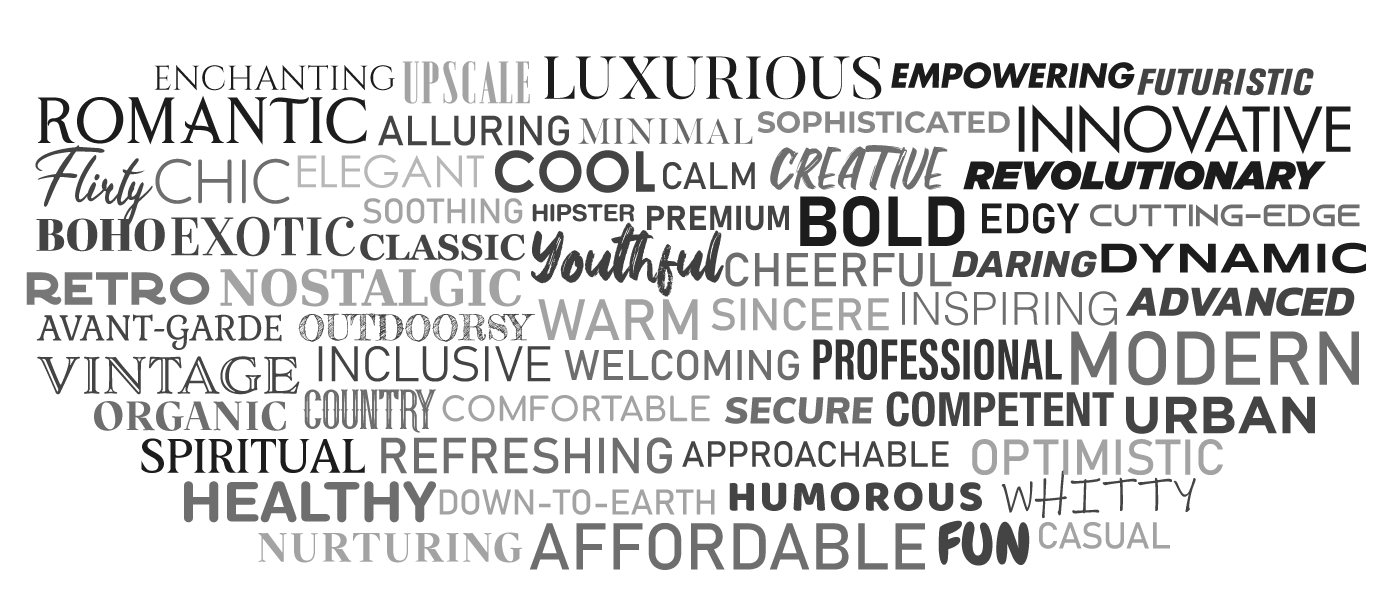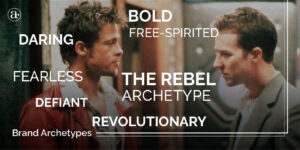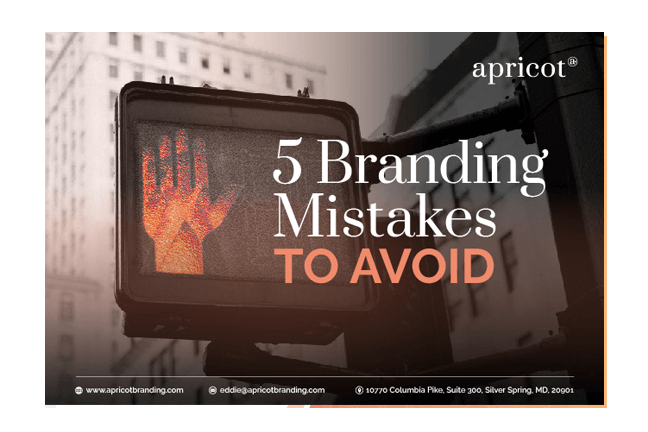The value of branding cannot be underestimated when starting a company or organization. Your brand is what differentiates you in a crowded industry. It’s your legacy. People also sometimes overlook the role that visual design plays in developing a brand over the long term. Branding is more complicated than just design. But this article focuses primarily on the value of design when developing a brand. Good design allows you to achieve clarity and improve perceptions. It also allows you to connect with customers viscerally, emotionally and culturally.
Communicate with Clarity
We humans are visual creatures. Our perception of the world around us relies mostly on what we see. Therefore your customers perception of your brand is highly influenced by what they see. What they see depends on how you develop your brand visually. Remember to keep it simple.

Studies reveal that 50% of your brain is dedicated to receiving and processing vision alone. This shows the importance of visuals.

Studies also reveal that 70% of your sense receptors are found in the eye alone. This further emphasizes the importance of vision.
Express Your Vision
What is the core vision behind your brand? What is your brand story? How can you express that through design in a way that resonates? Design allows a brand to express meaning with clarity through every touchpoint, from the online presence to print media and product. When developing a brand, your visual design needs to genuinely reflect the core purpose, values and attributes that bring the company to life. This way your company can avoid false perceptions.
Guide Your Customers
Who are your customers? What are their goals when using your product or visiting your website? How can you help them make better and easier decisions? Clarity is what allows your customers to intuitively locate and understand information that they need. Clarity is what guides them through the experience and helps them achieve their goals with a digital or tangible product. Remember that clarity is king when developing a brand. Also, don’t forget about accessibility because some of your customers may have visual impairments and your design needs to cater to them.
Differentiate
There are 2 forms of differentiation in the context of branding. Differentiation can refer to how you differentiate your different products, services and subsidiaries. Differentiation can also refer to how your brand stands out from competitors in a crowded industry. Either way, design plays a huge role.
A.) Differentiate your various products, services & subsidiaries: Especially when appealing to different target markets. One example is Ralph Lauren Corporation which is made up of various subsidiaries including Ralph Lauren Purple Label which is a premium luxury sub-brand designed for more upscale customers while Polo Sport is activewear designed for athletes. They both have a different design direction but they still look related to the parent brand. The company uses design to communicate the difference between its various subsidiaries in a way to avoid clutter and preserve a sense of sophistication.


B.) Stand Out in A Crowded Industry: According to Branding expert, David Brier, Branding is the “Art of Differentiation.” Your visual design is the first thing that customers notice when they interact with your brand. If your brand does not visually look differentiated then it will be perceived as a commodity. Your design needs to reflect the value and attributes that make your brand or product unique or premium. This is what makes your brand shine and blossom when everyone else looks the same.

CREATE THE RIGHT PERCEPTION

Your customers don’t only purchase your products or services, they buy the meaning and experience behind your brand. If you are not clear about what you want your brand to be associated with then people will form their own false perceptions in their minds.
With visual design, your brand is able to create the desired perception and look more well established. Who are your customers and what do they associate with your brand? Even color alone or your typography can have a huge impact when developing a brand.
Positive associations also help your brand tap into the associative long term memory because it is linked to other themes that people remember. But remember that what people associate with your brand is heavily influenced by culture.
MAKE A CULTURAL CONNECTION

When developing a brand, understand that the ability to tap into the culture and mindset of your customers is essential, especially for companies looking to expand into international markets in the future. Use visual design to connect with the culture of your target customers.
- Good design is done through a better understanding of what trends, themes and attitudes are emerging among your customers. What is going on in their lives?
- Visual Design that leverages culture will help brands stay relevant. Design must also be flexible in its ability to adapt to cultural shifts and changes in consumer behavior.
- Cultures also have varying perceptions across the globe so basic attributes like colors and symbols might have certain associations in the US that is different from India or China. What is positive in one culture may be offensive in another.
One example of how design leverages culture to create value is AirBnb which conducted semiotic research to find out how their corporate identity is perceived across various cultures. This lead to insights that guided their design direction. Design was a key factor to AirBnb’s success and they were able to develop a design system that allowed them to communicate across cultures without being controversial.

image source: honeyandbuzz.com
CREATE EMOTIONAL CONNECTIONS

We humans are emotional creatures. How do you make people feel? If your product or brand makes people feel positive then they are more likely to convert to purchase. If they can relate to your brand messages then they are more likely to become loyal. You can create a distinct, holistic and memorable experience through design that connects with people emotionally. Remember that emotional design is not about being manipulative, it is about empathy and using design to show that you understand and care.
One example of how brands connect emotionally is how Nike’s mission is to provide inspiration and innovation to every athlete in the world. This is the idea that drives a lot of their design and campaigns which have been successful because they have been able to build emotional connections.
Empathy is key to emotional design. Through design based on empathy, you can connect emotionally with your customers by understanding what drives them as well as their pain-points and perspectives. Some may be driven by sustainability while some may be driven by the need for self-motivation. Either way, you can gain a competitive advantage because you are able to make emotional connections through a better understanding of customers.
Inspire People: Design can connect with customer aspirations and it can also inspire them by empowering them to become proud advocates which builds loyalty. Your customers should have a self-expressive benefit by being associated with your brand. It should give them a sense of confidence and allow for self-expression. By using your product or wearing your logo, what statement are they making?
Connect Viscerally: This is based off Don Normans 3 levels of emotional design. You can create an emotional impulse purchase through the first points of interaction with your brand. The Physical appearance and perceptible qualities of a product can connect with people emotionally. Design is essential for creating the “WOW Effect” at first glance.
Design lets your brand come to life with a distinct personality, message and tone that differentiates it. It begins to have a more emotional meaning instead of being a flat corporation or commoditized product.
In conclusion, The value of branding and design cannot be underestimated. Good visual design adds value by allowing customers to easily navigate different products and services in order to make better purchase decisions. It helps brands stand out from the clutter and build positive perceptions. It also leverages culture and emotional attributes related to customer needs, self image, and aspirations which are intangible. If you enjoyed this article then you may also like my previous one on 5 Reasons Why Your Company Need A Rebrand.
“Designers who can think about brands in a dynamic way are creating extra value for their clients and in turn they are helping those businesses to create better experiences for more people. In this way, you can see that designers can have a big impact on the world. They are a force for improvement.”
~ S. Arnold Iconika







2 Responses
I liked the way you explained the importance of visual effects. Also, you did a nice job of combining text and images!
Yes the points covered in this article can apply to all aspects of design in branding. The images help to explain as well.